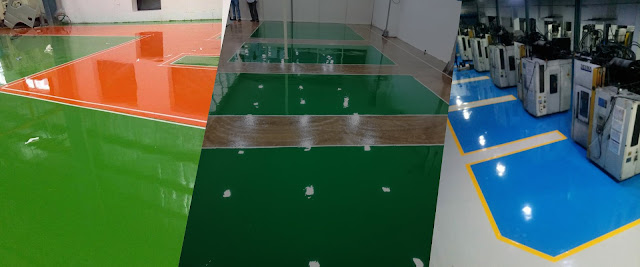Epoxy Flooring: A Comprehensive Guide
Epoxy flooring is a popular flooring option for both commercial and residential spaces. It is a type of flooring that is created by combining epoxy resin with a hardener, which creates a durable and long-lasting surface. In this blog post, we will discuss the benefits of epoxy flooring, the different types available, and the installation process.
Benefits of Epoxy Flooring:
Durability: Epoxy flooring is highly durable and resistant to damage. It can withstand heavy foot traffic, spills, and even impact from heavy objects.
Easy to Clean: Epoxy flooring is easy to clean and maintain. Unlike traditional flooring options, it does not require special cleaning products or techniques.
Aesthetically Pleasing: Epoxy flooring is available in a variety of colors and designs, making it a versatile option for flooring. You can choose a design that complements the rest of your home or office décor.
Chemical Resistance: Epoxy flooring is highly resistant to chemicals and stains. This makes it a popular option for industrial spaces where chemicals and spills are common.
Waterproof: Epoxy flooring is highly resistant to water damage, making it a perfect option for areas that are prone to moisture.
Types of Epoxy Flooring:
Self-Leveling Epoxy: This type of epoxy is ideal for uneven surfaces, as it can create a smooth and level surface.
Metallic Epoxy: Metallic epoxy is a unique flooring option that has a metallic finish. It is perfect for creating a modern and sophisticated look.
Terrazzo Epoxy: Terrazzo epoxy is a type of epoxy flooring that mimics the look of traditional terrazzo. It is available in a variety of colors and patterns.
Quartz Epoxy: Quartz epoxy is a durable and long-lasting option that is perfect for high-traffic areas. It is created by combining epoxy with small quartz crystals.
Installation Process of Epoxy Flooring:
Preparation: The first step in installing epoxy flooring is to prepare the surface. This involves cleaning and etching the concrete floor to ensure that the epoxy adheres properly.
Primer Coat: Once the surface is prepared, a primer coat is applied. The primer helps to create a strong bond between the epoxy and the concrete floor.
Epoxy Application: After the primer coat is dry, the epoxy is applied. This is typically done in multiple coats to ensure a smooth and even finish.
Curing: The epoxy must be allowed to cure for several days before it can be used. This allows the epoxy to fully harden and bond with the concrete floor.
Finishing: Once the epoxy is cured, a finishing coat is applied. This helps to protect the epoxy from damage and gives it a glossy finish.
In conclusion, epoxy flooring is a durable, easy-to-maintain, and aesthetically pleasing option for any space. It is available in a variety of designs and colors, making it a versatile option for any home or office décor. The installation process is straightforward and can be done by a professional or a DIY enthusiast. With proper maintenance, epoxy flooring can last for many years, making it a worthwhile investment for your home or business.
.jpg)


Comments
Post a Comment